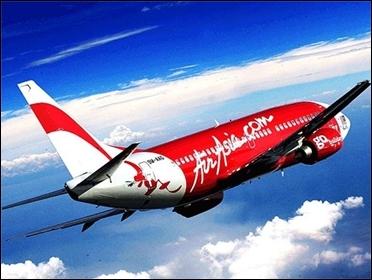
It is a hub for industrial engineering, houses a number of institutions of higher education - some of them over a hundred years old - and is famous for its temples. It is an ancient city and the fourth-largest urban centre of Tamil Nadu.
Still, it is an unlikely place for an aggressive international budget airline to start its Indian operations. But that's precisely what AirAsia, the largest low-cost carrier in South-East Asia, has done.
It found that people from Trichy travelled first to Chennai and then took a connecting flight to destinations like Singapore, Kuala Lumpur and Bangkok. It was expensive, and it wasted a lot of their time.
AirAsia moved quickly to plug the need gap. And it has done so in its signature style: It has mounted no less than 10 weekly flights from the city to Kuala Lumpur; and the average return fare is Rs 12,000 - almost half of the Rs 21,000 that it cost earlier.
And while Air India Express, the low-cost arm of state-owned Air India, has now matched the AirAsia fare, it does not offer a direct flight and has a stopover at Chennai. The news is that all of AirAsia flights are choc-a-bloc. Trichy could one day make it to a business school case study.
...
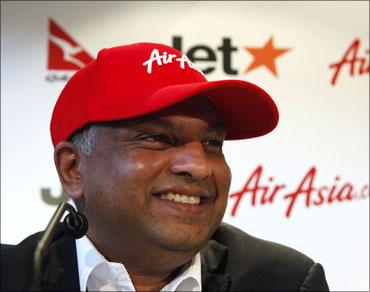
Having discovered Trichy, Anthony Francis "Tony" Fernandes, the maverick promoter of AirAsia, is not taking life easy. He means serious business. Last week, AirAsia launched a daily Airbus A-330 flight from Delhi to Kuala Lumpur at a basic fare of, hold your breadth, just Re 1 for two days.
After taxes and other charges, the price to the traveller comes to Rs 1,633 for a one-way ticket - nearly one seventh of what you would have to fork out for a direct flight on any other airline.
Its anticipated entry into this lucrative sector had kicked off a price war: Arch rival and full-service carrier Malaysian Airlines dropped fares by as much as 30 per cent, though for a limited period of time.
Says Malaysian Airlines Regional Manager (South Asia) Azar Hamid: "Tactical fare offers are promotions that we do on a regular basis to stimulate the market." But the significance of the cuts is not lost on observers.
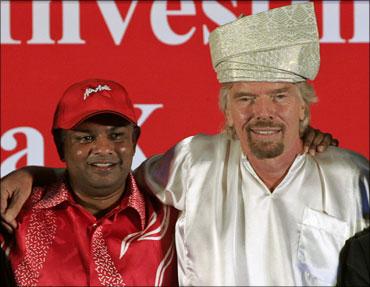
He next signed up with Time Warner. In 2001, he bought AirAsia for the token sum of one Malaysian ringgit (about Rs 15 now). The airline, started by a consortium led by the Malaysian government, had commenced operations in 1996 but ran headlong into losses and debt of $100 million.
Fernandes acquired it in distress sale and turned it around in two years flat. All his recent moves have been bold and imaginative. For instance, when the Sars epidemic hit travel in South Asia, he dropped prices. Within no time, it was business as usual once again.
The Malaysian government has conferred on him the highest civilian honour of Dato' Sri for his services to the country. "I think where we have succeeded is enabling people to fly home for a weekend. I would like to enable people further to fly home for dinner. I think what really matters is the shift that has happened in the way people now perceive air travel," Fernandes had said in an earlier interaction with Business Standard.
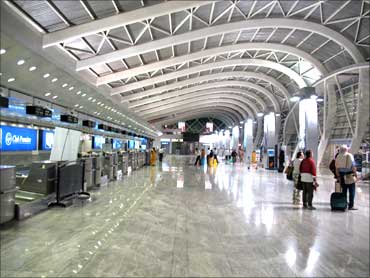
His next stop is India, the second-fastest growing economy in the world after China. He studied the Indian market for close to two years, during which time he expanded in South-East Asia, China and Australia.
Once that was done, Fernandes acted with speed. In just eight months since its first commercial flight landed in India, AirAsia is flying to nine destinations across the country and has over 120 flights a week (to and fro) in operation. Seldom has any airline scaled up with such speed.
If that is not enough, the group's joint venture, Thai AirAsia, which operates from Bangkok, is also set for an aggressive push into the country with direct flights between India and Thailand.
"Thailand to India on AirAsia is going to be a huge hit," says Fernandes. All told, the group's target is to raise the number of flights to over 148 a week in a few months.
Malaysian Airlines, though it has been around in India for many years, runs 31 flights a week from just five locations in the country. Emirates, the dominant foreign airline in India, operates 184 flights a week (one way) but from only 10 destinations.
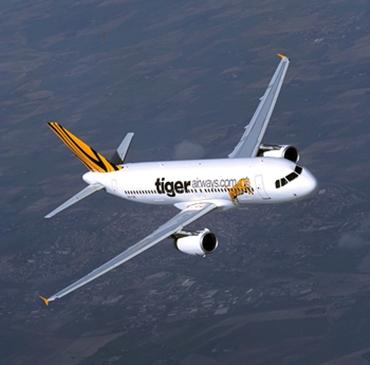
Ferandes and his team, on their part, are aware that rivals are ready to slug it out in the Indian skies. But they are clear that they will not play second fiddle to anybody. The target is unambiguous.
"It would be fantastic to see AirAsia become the largest foreign low-cost carrier in India. We've achieved this feat in Singapore; it would be grand to duplicate the feat in India, home to over one billion people," says Fernandes.
...
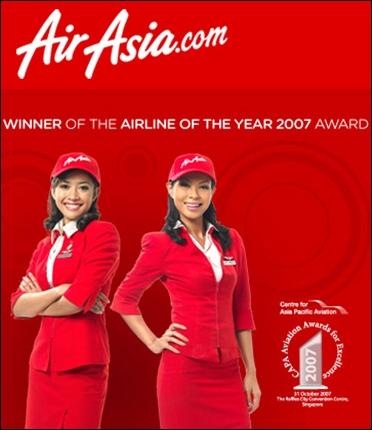
That's not small. And much of the expansion will come from new destinations. Amritsar and Ahmedabad are already on AirAsia's radar. Of course, the frequency to large cities like Mumbai, where AirAsia currently operates four flights a week, will also go up.
The only issue that hinders the expansion is that the seats in the bilateral agreement between India and Malaysia - about 18,000 a week - have been more or less fully utilised. But there is hope for Fernandes.
Malaysia is pushing for an open sky policy with India, which means no restriction on the number of seats. If that proposal goes through, AirAsia will be the biggest beneficiary.
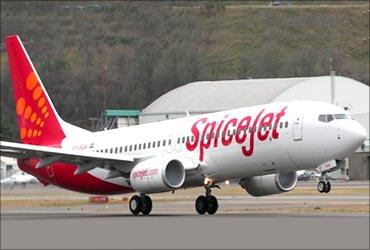
The Indian challenge
What about Indian low-cost carriers who have ambitions to fly abroad? Won't Indian travellers prefer to fly with Indian-owned airlines? SpiceJet, with Kalanathi Maran now on the driving seat, will launch services to overseas destinations later this year.
Closely-held IndiGo, widely believed to be the first low-cost Indian carrier to turn profitable, is expected to go international next year. These airlines are yet to come out in the open with their international plans. But experts say the challenge will be tough in South-East Asia where price and connectivity are important.
"AirAsia has embarked on a carpet-bombing strategy in India. Its costs are far lower than any of the Indian low-cost carriers. Even full-service carriers need to watch out," says Kapil Kaul who heads the Centre for Asia Pacific Aviation in India.
Indian low-cost carriers have costs that are much higher than those of AirAsia. That is because Fernandes runs a tight ship.
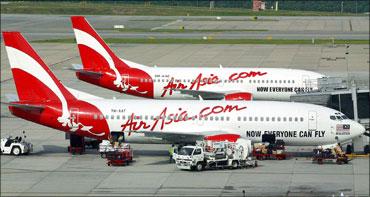
AirAsia's cost per available seat kilometre is around Rs 1.57 - amongst the lowest in the world. (The figure for Indian budget carriers is more than 50 per cent higher at Rs 2.40.)
This helps it break even if the aircraft is only 52 per cent full. Its narrow bodied aircraft take only 25 minutes at any airport to fly again, resulting in lower airport charges. The Indian best practice is also similar but on domestic routes.
International flights can be a difficult ball-game. An AirAsia aircraft can fly up to 17 or even 18 hours in a day; no Indian carrier presses its aircraft into service for more than 11 or 12 hours. AirAsia has hedged its jet fuel requirements for three years.
It employs just 68 people per aircraft, which is again amongst the lowest in the world. The cabin crew often multitasks to clean the aircraft and handle the boarding.
AirAsia is increasingly using wide-bodied aircraft which offer more seats and burn less fuel than narrow-bodied aircraft - the current favourite of Indian carriers. It runs its own academy to train pilots, unlike Indian carriers who poach from each other and drive up salaries to exorbitant levels in the bargain.
Indian low-cost carriers are only too aware of their handicap. "It's an unequal battle because AirAsia gets subsidies on fuel as well as on airport charges. Otherwise, its costs would be the same as ours," says a top executive of an Indian low-cost carrier.
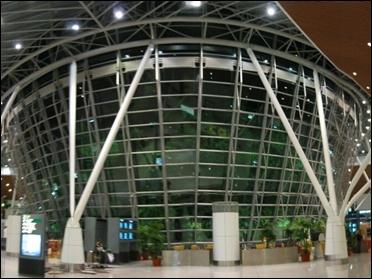
They argue that the Indian government by liberally giving away the rights to AirAsia in the hinterland rather than limiting it to metros has ensured that homespun low-cost carriers cannot leverage their domestic network while flying international to offer seamless connectivity to travellers. "AirAsia has joint ventures in Thailand and in Indonesia to leverage the bilateral rights there.
So apart from direct flights to Kuala Lumpur, it will also put in direct flights to Bangkok from India. As most Indian low-cost carriers will need another year before they can operate to these destinations, AirAsia will have sewn up the best slots by then," says an executive of another low-cost carrier which is planning to fly abroad.
With their costs way above AirAsia, Osman-Rani thinks Indian low-thinks Indian low-cost carriers will restrict their operations to neighbouring countries. The impact on pan-Asia carriers like AirAsia would thus be minimal. Still, Indian carriers are unlikely to give up without a fight.
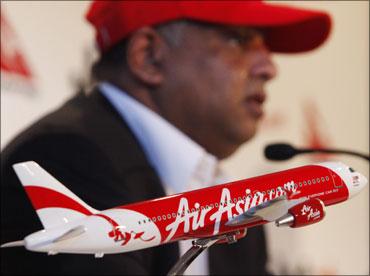
Staying ahead
But AirAsia has other plans also to stay ahead of the curve. One, of course, is that it will play the price card, just like what it has done across the Asean (the 10-country Association of South East Asian Nations) region. Osman-Rani says that its fares are at least 30 to 50 per cent cheaper than full-service carriers.
In its quest to keep the budget traveller happy, AirAsia is not ignoring the business traveller or the well-heeled traveller. On all Airbus A-330 flights from Delhi and Mumbai, it offers 12 premium class seats with flat beds, but the fares are 60 to 70 per cent lower than business class of a full-service carrier.
So it could provide direct challenge to the full-service carriers too. "You can travel business class at the price of an economy ticket. We don't cater to the top executives but to the small businessman or the leisure traveller who wants to go in style" says Osman-Rani.
Two, it will leverage the large network - over 130 destinations - it has built in the Asean region for leisure travellers, which no Indian carrier, low-cost or full-service, can match.
Osman-Rani says that 85 per cent of the Indian travellers to South-East Asia are on a leisure trip and, unlike in the past, they prefer to go to at least two or three destinations - Kuala Lumpur, Singapore and Bangkok, for instance.
"Thirty per cent of Indian travellers don't go to Kuala Lumpur only but to other destinations in the region as well. We have the advantage of providing connectivity to all these locations. That is a major plus," says he. With good slots at airports and a large fleet of aircraft, AirAsia offers convenient flight timings.

The flights take off at night and reach in the morning; the wait for the connecting flight is never too long.
Three, AirAsia will connect smaller cities and towns in India. "India has such a huge appeal that it's easy to sell from any country," says Fernandes. He feels that all Indian airlines are polarised towards the metros. There are many unutilised airports and under-served routes in the country which it can use to good effect. "A good example is the Hyderabad airport.
There's so much more that it can be used for; but everyone wants to set up base in Mumbai and Delhi," Fernandes had said earlier. It is, after all, a volume-led business and Fernandes plays the game to perfection. In the first year after he took over, AirAsia carried 200,000 passengers and had two planes; this year, it will carry 27 million passengers and will have a fleet of 92 aircraft.
Whoever wins the battle of the skies, travellers have no reason to complain.